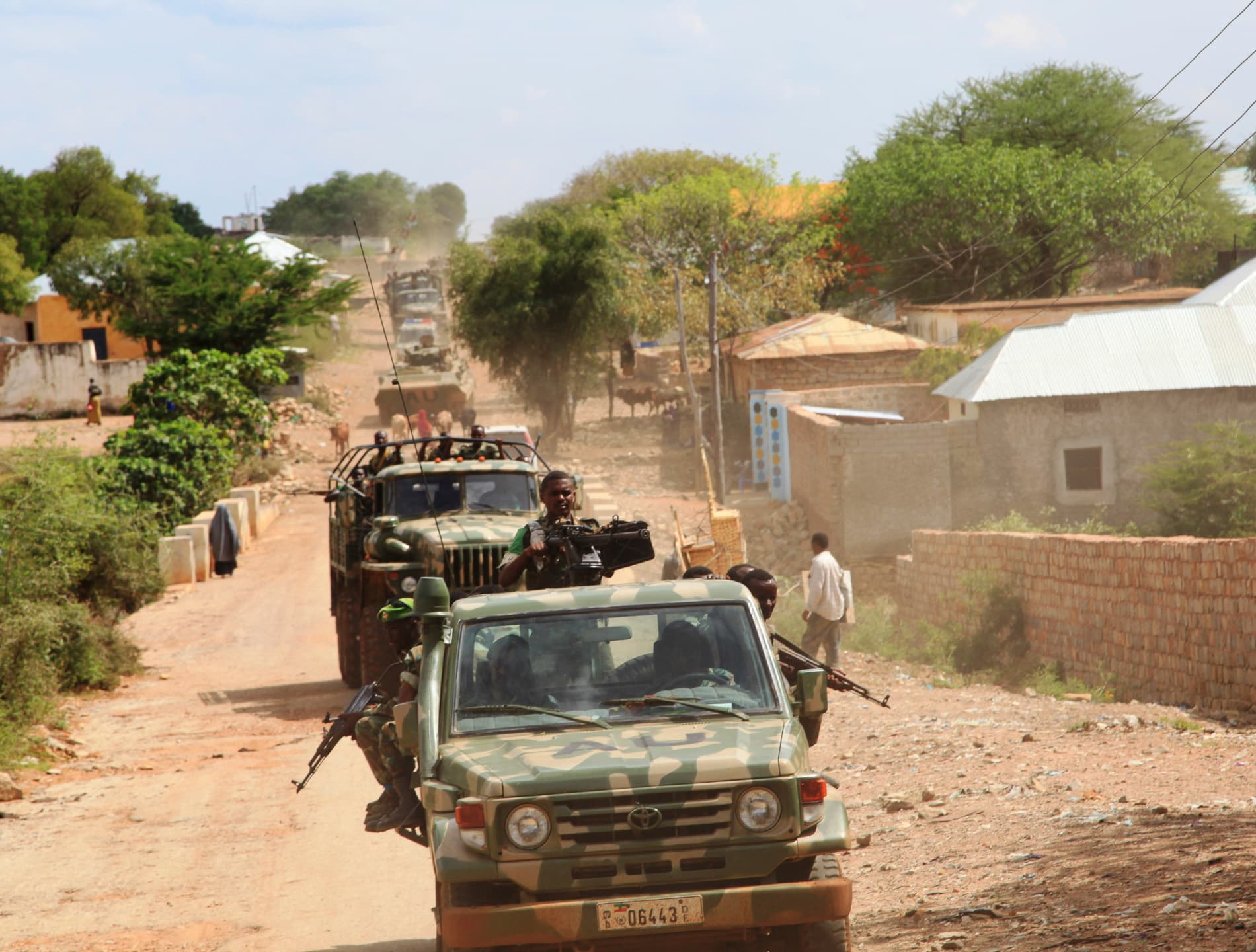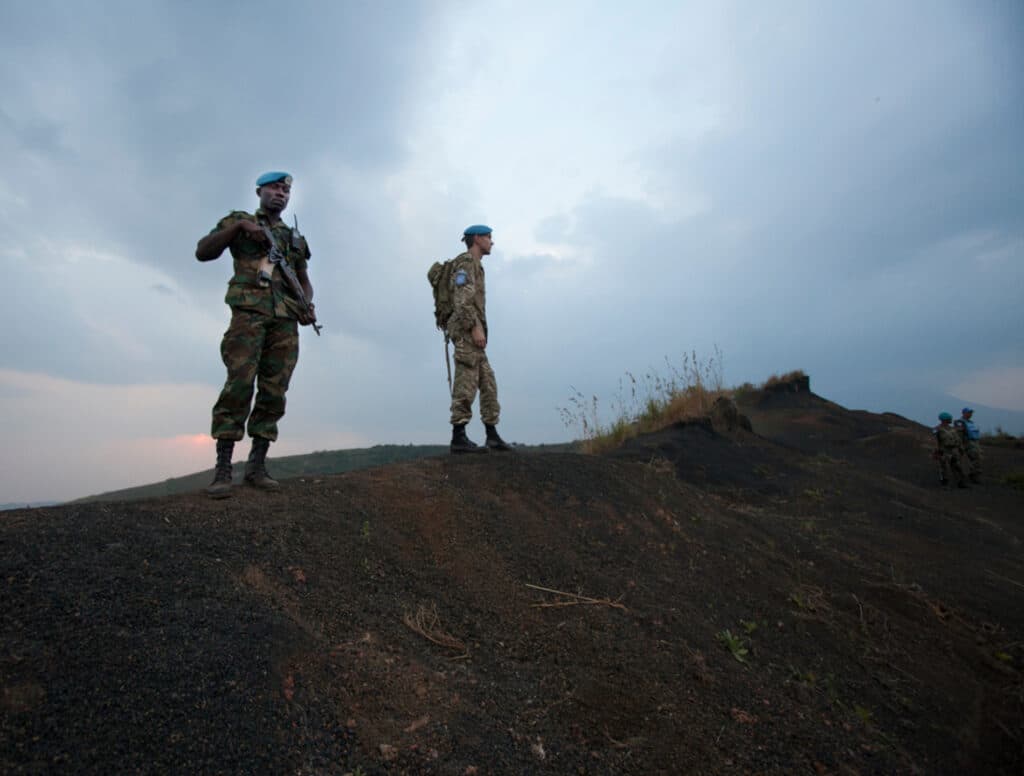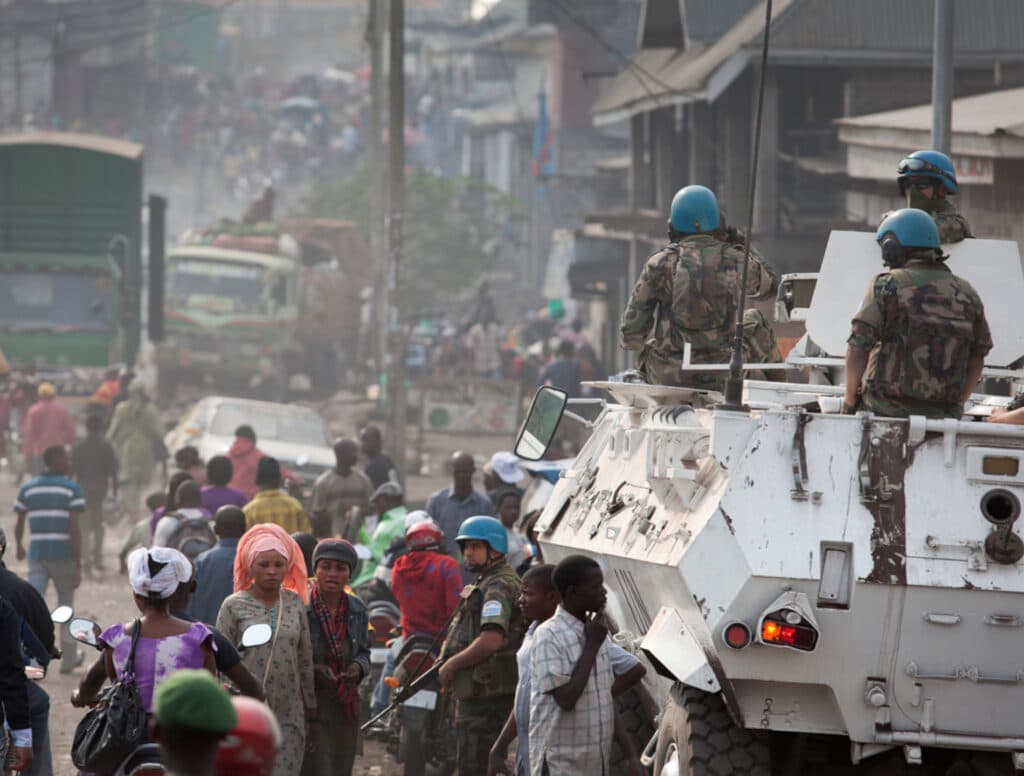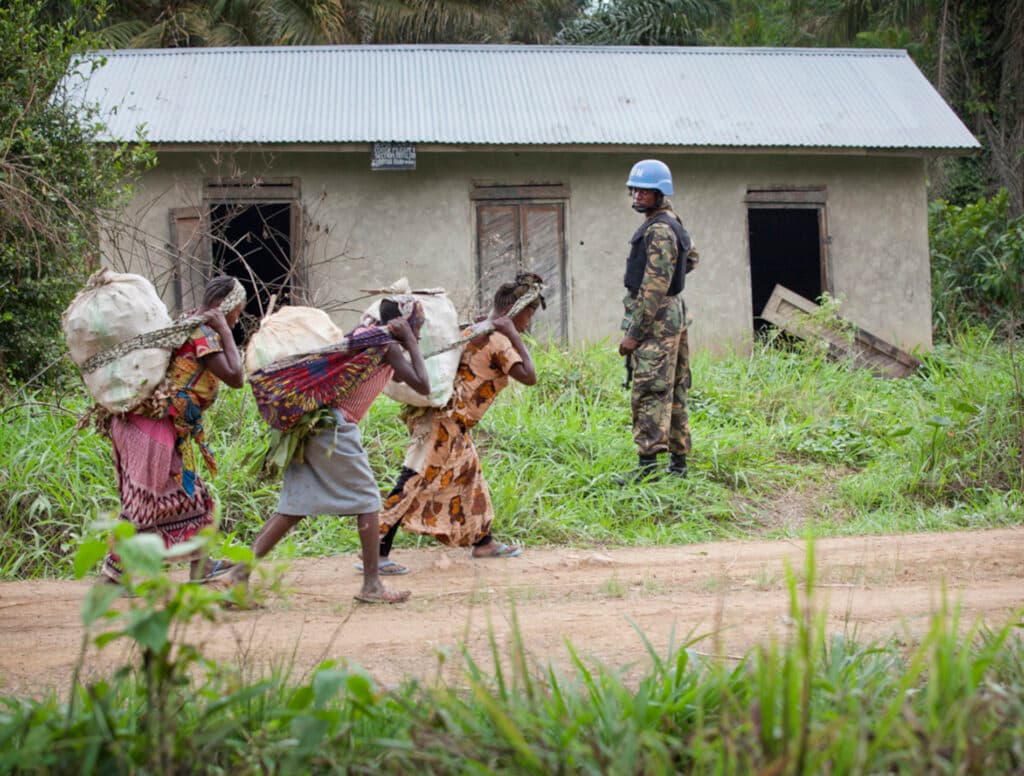
When is IHL a useful tool?
A framework for strategic engagement and decision-making in the promotion of international humanitarian law.
The Diakonia International Humanitarian Law Centre developed this framework to support everyone engaged in humanitarian advocacy to understand better when international humanitarian law (IHL) is most effective.
Introduction to the framework
The framework is comprised of three major elements:
1. Assessment of the landscape
Engagement with IHL cannot and should not follow a universally applicable template but requires a context-specific approach. Therefore, an assessment of the context should be the first step of a potential intervention to assess if IHL applies, what type of conflict is taking place, and which major state and non-state actors are involved.
Any such assessment needs to be regularly updated as conflicts can evolve: they can, for example, simply end (and hence end the applicability of IHL), develop from a non-international armed conflict (NIAC) to an international armed conflict (IAC), or involve new actors.
This process should also include an assessment of the attitude of the relevant armed actors towards IHL – for example if they accept the applicability of IHL. Knowing where they stand will help determine whether IHL is an effective tool for an intervention. It is important to note that, even if the application of IHL is disputed, international human rights law remains applicable.
This assessment should also explore if engagement with IHL is sensitive and assess why. It is important to be aware of the fact that attitudes within a state can differ. For example, the military, the judiciary, and various government ministries may view engagement with IHL differently.
2. Effectiveness of the law – and other arguments
An assessment of the landscape in step one helps to shape an intervention. The second step is to determine whether IHL is the most effective tool to address a specific protection issue. The value of IHL can be assessed through an analysis of two elements:
A) Evaluating a specific legal provision and its overarching rationale itself – thus whether it is restrictive, permissive, or neutral: Knowing how permissive or restrictive a legal provision is, can influence significantly how useful it may be to promote a humanitarian outcome. For example, if an act is strictly prohibited, an armed actor will not be able to present a justification for certain behaviour. Many rules of IHL, however, prohibit specific acts but allow deviation under certain circumstances. To assess the validity of and counter potential justifications of an armed actor, a clear understanding of the provision is necessary. For example, in advocacy activities with an armed actor on the issue of attacks on medical facilities, it is important to know that a medical facility can lose its protection from attack in exceptional situations.
B) Assessing if referencing the provision could potentially persuade an armed actor – thus if IHL is the most effective tool: Humanitarians sometimes assume that public and private advocacy towards armed actors should by default be framed with reference to IHL, particularly when IHL sets out a very high standard of protection.
Such an approach assumes that the armed actor is concerned about the reputational and legal consequences of possible violations. However, particularly when working on prevention it is important to understand what factors or interests are likely to have the most persuading power and the greatest influence on the behaviour of an armed actor.
For example, if an armed actor intends to order the displacement of thousands of people, and those that remain will be considered non-civilians in potential violation of IHL, the actor might not be persuaded by the argument that his plans are likely illegal. Instead, a more strategic argument could be to highlight the risk of triggering a health crisis or causing a backlash from local communities. While these arguments do not make explicit reference to or mention IHL, they could still be more convincing and make the armed actor respect the law.
3. Knowing the facts
The final element to consider is the availability of facts about a possible IHL violation. A lack of detailed information should not discourage an intervention or prevent a sensitive issue being raised. However, when the facts are not clear, a more nuanced language may be required. Strong statements about violations of IHL should be made with caution, especially in the immediate aftermath of an event when not all facts may be known. As a reference point, Commissions of Inquiries are often able to authoritatively make such assessments and provide guidance. Often, however, even these Commissions are careful and either speak of “alleged violations” or do not identify individual perpetrators.

Step 1: Assessing the IHL landscape
Key Points:
- IHL only applies to situations of armed conflict. It does not apply by “default” to a humanitarian situation.
- Once an armed conflict ends, IHL no longer applies.
- Each context has a unique landscape, both in terms of the applicable law and legal or political sensitivities.
What do you need to know?
- Does IHL (still) apply (also known as classification of the conflict)?
- What conventions and legal instruments are applicable?
- Who are the parties to the conflict that are bound by IHL?
- Do those parties accept that they are in a situation of conflict and that IHL applies?
- Is IHL considered sensitive? Why?
1. Does IHL apply?
IHL applies in situations of armed conflict, which can be distinguished in two types: international armed conflict (IAC) and non-international armed conflict (NIAC).
An international armed conflict is a violent exchange between two or more states. The basic requirement for an IAC is the existence of an armed conflict between two or more states.
A non-international armed conflict is an armed conflict within a state. Internal disturbances or tensions, such as riots, demonstrations, and isolated, sporadic acts of violence do not qualify as armed conflict. Instead, a NIAC is characterised by protracted armed violence and 2) the involvement of an organised armed group.
1) Protraction of violence: The following factors can give an indication of the level of protraction and intensity of violence needed for a NIAC:
- the number, duration and intensity of individual confrontations;
- the type of weapons and other military equipment used;
- the number and calibre of munitions fired;
- the number of persons and type of forces partaking in the fighting;
- the number of casualties;
- the extent of material destruction;
- the number of civilians fleeing combat zones;
- the involvement of the UN Security Council may also be a reflection of the intensity of a conflict.
2) Organisation: The following factors are indicative of the level of organisation of an armed group:
- the existence of a command structure and disciplinary rules and mechanisms;
- the existence of a headquarters;
- the ability to gain access to weapons, other military equipment, and training;
- the ability to plan, coordinate, and carry out military operations;
- the ability to define a unified military strategy and use military tactics;
- the ability to speak with one voice, negotiate, and conclude agreements such as cease-fires or peace accords.
Tipp: The RULAC (Rule of Law in Armed Conflict) provides a database of classifications of conflicts worldwide.
2. Do armed actors accept that IHL applies?
A. How do the armed actors in your context see the situation? Why do they take this position? Is there a difference between their official or unofficial position?
| Accept IHL applicability | Unclear | Deny IHL applicability | |
| Civilian government | ☐ | ☐ | ☐ |
| Judiciary | ☐ | ☐ | ☐ |
| Military | ☐ | ☐ | ☐ |
B. How do armed actors motivate or justify their position?
C. If deny, do they accept the applicability of human rights law?
3. Are the states party to major treaties?
☑Additional Protocol II
☑ Convention on Certain Conventional Weapons
☑ Child Rights Convention and optional protocol on children in AC
☑ Convention of Rights of Persons with Disabilities
☑ Convention for the Protection of Cultural Property in the Event of Armed Conflict
If states are not party to such treaties, reference to Customary International Humanitarian Law is still an option.
4. Does IHL still apply?
IHL does not apply anymore when an armed conflict ends.
Step 2: Effectiveness of the law
After step 1 you have a clear overview of the legal landscape in which you operate: you know that IHL applies, how the situation is classified (i.e., the type of conflict and the relevant laws that apply), and who the armed actors are. You should also have a sense of how sensitive engagement with IHL is.
In step 2 of the assessment, the following questions should be asked:
1. How permissive or restrictive is the IHL provision you want to rely on?
2. How useful – or counterproductive – is explicit reference to IHL? Are there more persuasive arguments that could lead to behaviour change?
1. How permissive or restrictive is the IHL provision
The effectiveness of IHL in addressing a protection concern highly depends on the issue at stake.
IHL mainly contains provisions that limit, restrict, or prohibit specific acts and methods of warfare. However, IHL also includes exceptions which can be used to justify certain conduct.
Therefore, a clear understanding of the provision is necessary. For example, it is important to know that a medical facility can lose its protection from attack in exceptional situations. A provision that is very permissive might not always be the most effective tool to prevent or respond to an apparent violation.
Example how to analyse an IHL provision:
| Known facts | Relevant provision(s) | Assessment of restrictiveness | Risk assessment |
| Reports of attacks against hospital | Rule 28. Medical units exclusively assigned to medical purposes must be respected and protected in all circumstances. They lose their protection if they are being used, outside their humanitarian function, to commit acts harmful to the enemy. | Protected in all circumstances is very explicit and therefore a strong level of protection. However, it is possible for them to lose protection. | IHL very strong and explicit. Check facts to make sure there is no allegation or credible suggestions of the medical unit being used for acts harmful to the enemy. |
Tipp: The provisions of IHL can be found online.
2. What are the actor’s interests, and can they be influenced by explicit reference to IHL?
Preventing violations can directly save lives and minimise harm. When seeking to prevent a violation, please consider:
- Will the use of explicit IHL language have a strong influence on the actor who may be about to commit a violation?
- Who is best placed to exert pressure on the armed actor – for example local or international political actors, religious or community leaders? Do you have access to them?
- Are there other interests and arguments that can be invoked and may have a higher persuading power than direct reference to IHL?
Step 3: Knowing the facts
Being assertive about a possible violation of IHL can be important. However, when facts are disputed or information is unclear, it is smart to adapt the language. Under the right circumstances, acknowledging the limits of your knowledge can even be helpful to build confidence.
Key phrases to consider are:
- possible violations
- reason to believe
- serious concern over
- according to the available information



